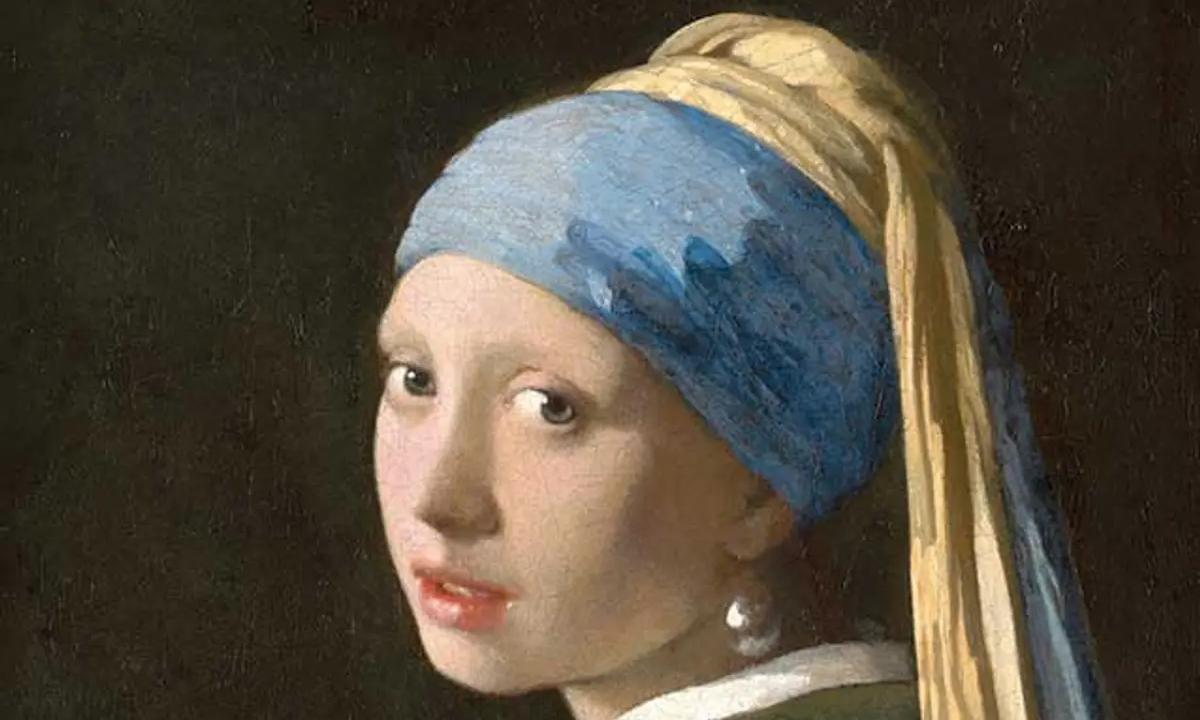The Vermeer exhibition at the Rijksmuseum featuring Girl with a Pearl Earring (around 1665) was a highlight of 2023 Photo: © Margareta Svensson
As the year ends, our thoughts are with the victims caught up in the war in Gaza. Our readers will be universally distressed at the suffering of innocent people, Palestinian and Israeli. Gaza has rightfully had saturation media coverage during the past few weeks. But at The Art Newspaper our remit is very much narrower: to focus on the impact of armed conflict on art, museums, archaeological and historical sites, religious buildings and heritage.
Needless to say, losses to culture pale into insignificance compared with the deaths, the injuries and the suffering caused by the displacement of millions of people—and the terrible fate of hostages. But in the long run, Gaza must be rebuilt and every society depends on its culture to help bind its people together.
Determining what damage has been caused to Gaza’s heritage is at present a very challenging task. The Art Newspaper has no correspondent in Gaza and, even if we did, reporters there operate under either Israeli or Hamas control. As all journalists know only too well, truth is the first casualty of war. But using a wide spread of media sources, we have done our best to assemble data on damage to Gaza’s culture.
Sadly, art has hardly flourished in Gaza because of the territory’s tragic late-20th century history. In 1948, the year the state of Israel was created, Gaza had a population of less than 50,000. Now it has 2.4 million inhabitants, making it among the most densely populated territories on earth. Half its people are registered refugees. Art must seem a luxury for people in these circumstances, although it can provide inspiration.
The Gaza conflict creates a dilemma for museums and artists outside the region: should they express their views on the rights and wrongs of the Israeli and Hamas sides? Most museums have no special expertise in international relations and arguably should avoid getting entangled in political issues, although they should rightfully be concerned about threats to culture. Artists, as individuals, make their own decisions.
Looking back over this year, the situation in Ukraine since the Russian invasion of February 2022 is highly distressing. Assembling reliable information on damage to Ukrainian heritage has been difficult, although more feasible than for Gaza. Hardly a month has gone by since last year when The Art Newspaper has not carried a report on Ukraine. Our articles have covered damage to historic sites, Russian looting of Ukrainian museums, sanctioned Russian collectors and sponsors, leadership changes at Russian museums and Western support for Ukrainian artists. Sadly, the invasion has meant that cultural links between Russia and the West have become even more difficult than at the height of the Cold War.
Apart from these two terrible conflicts, what other major issues faced the art world in 2023? Restitution of African and Oceanic art seized during the colonial period, as well as the return of Native American and Canadian First Nations artefacts, is now very much on the agenda, particularly over items looted in the late 19th century by British troops during battles at Maqdala (Ethiopia), Benin (present-day Nigeria) and the Asante empire (present-day Ghana). Museums in Europe and North America will face even greater pressures for restitution in the coming year.
One can hardly avoid mentioning the crisis which hit the British Museum this summer, its most damaging since the Second World War. Revelations that one of its senior curators had allegedly stolen 2,000 antiquities from the museum over a 25-year period seemed almost unbelievable.
Hartwig Fischer rightly resigned as director, to be replaced by the steady hand of Mark Jones (formerly at the Victoria and Albert Museum) as the interim head. The search is now on for a new permanent director, who should take over by next summer. Their main challenges will be to restore the British Museum’s reputation, ensure security, and launch the ambitious masterplan to refurbish the building and redisplay the collection.
Looking back on 2023, one of the brightest spots was the Vermeer exhibition at Amsterdam’s Rijksmuseum. It deserves the highest praise for several reasons: reassembling so much of the master’s oeuvre (28 out of the 37 paintings), its elegant presentation, the number of visitors (650,000) and what it added to our scholarly knowledge of the artist. Vermeer was a triumph, a bright spot amid this year’s man-made disasters.
• Martin Bailey is special correspondent for The Art Newspaper

